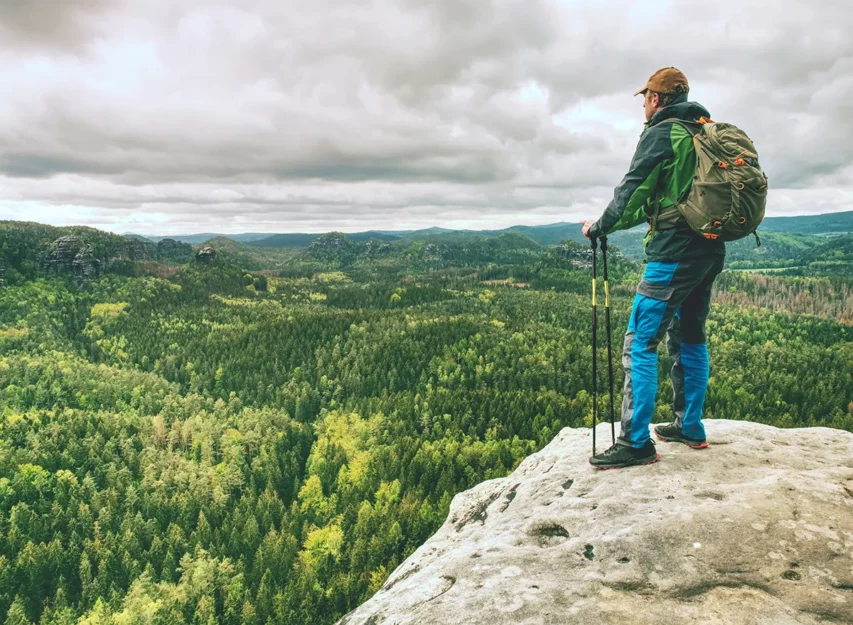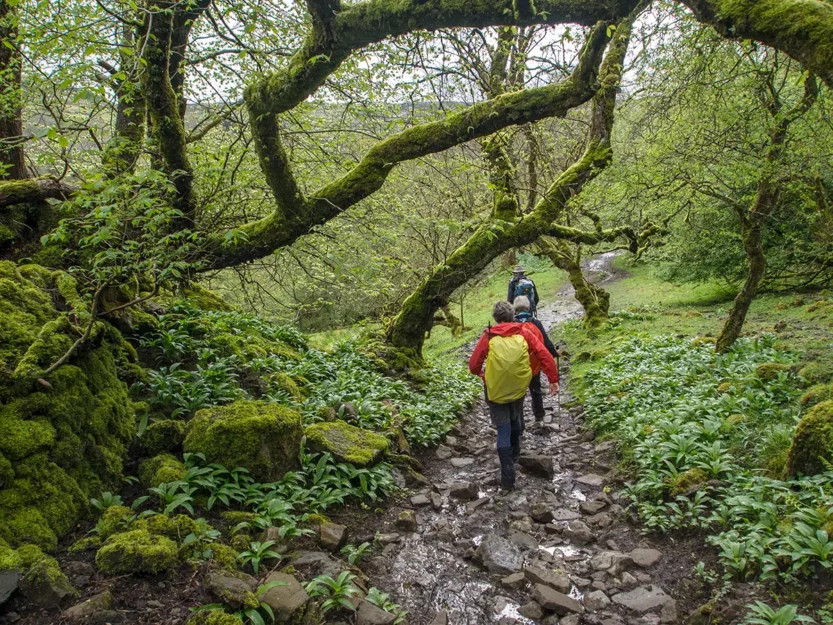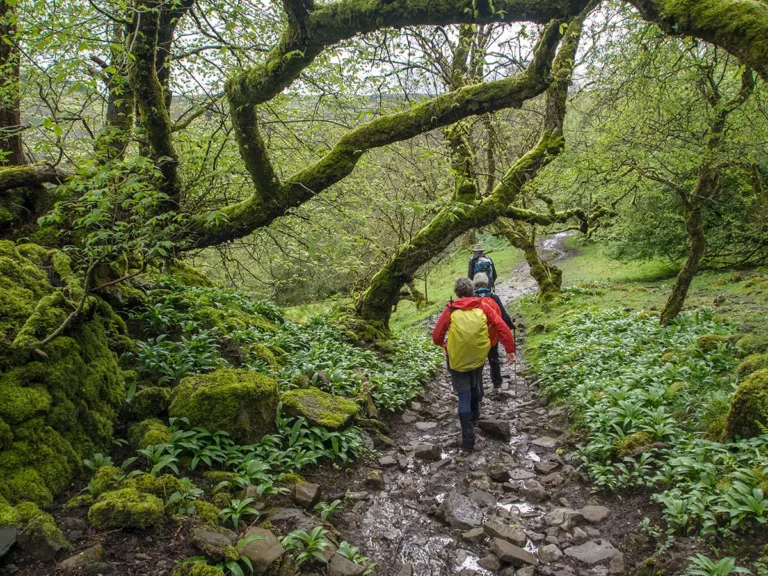Let’s get one thing straight, Converse makes one of the most comfortable sneakers ever. Chuck Taylor All-Stars are lightweight, easy to walk in, and feel broken in right out of the box.
But can you wear Converse for hiking? Hiking in Converse shoes is not advisable, but by taking the proper precautions and sticking to safe, easy trails, you can get away with it.
Originally designed as basketball shoes in the 1920s, Chuck Taylor All-Stars have a flat rubber sole that provides minimal traction on sand, dirt, and rocks. Furthermore, the flexibility of the cotton canvas doesn’t offer enough protection from ankle injuries.
Making the right footwear decision is essential for enjoying a safe hike. This article details the difference between wearing Converse for hiking versus a pair of hiking boots.
If you don’t have other shoes to choose from — and hiking in Converse is your only option — we’ve also provided some tips to keep you safe.
What’s the risk of hiking in Converse?
A significant part of hiking is asking: “does the reward outweigh the risk?” It’s best to leave these decisions to scaling a rock face for a panoramic view instead of the risk of wearing inadequate footwear.
Hiking already comes with many risks, especially ankle injuries. In a survey by the International Journal of Environmental Research and Public Health, 42% of hikers reported ankle injuries, with 13% suffering from head injuries and 10% lower leg.
Over 70% of the hikers surveyed wore ankle-high hiking boots.
With so many hikers injured wearing boots that provide more support and grip than Converse, you run an even higher risk of ankle and head injuries when hiking in Converse.
Major injuries aren’t your only risk. Hikers in ill-fitting shoes often struggle with toe numbness due to the over-tightening of shoes, nerve compression from lack of arch support, and painful bruising of the toenail, called hiker’s toenail.
Hiking in Converse vs. hiking in boots
Your boots are your base. A great hiking boot is supportive, with the added stiffness and spring your feet and ankles require for challenging hikes.
When hiking, the ability to press off any surface safely with complete confidence in the grip of your sole is vital. The design of a quality hiking boot provides that.
If you’re just getting started hiking, an investment in a well-designed hiking boot is essential. Hiking boots come in various materials and shapes that minimize slippage on wet rocks and maximize sticking power on flaking hill grades.
Comparing the sole
The sole of a shoe is your connection to the ground. It determines your stability, how quickly you can move up or down a hill, and how safely.
When hiking, the outsole of shoes and boots takes a beating from thousands of small pointy rocks, sharp edges of boulders, and loose gravel when descending a steep ridge.

The contrast is noticeable when comparing Converse Chuck Taylors to REI’s top-rated hiking boots. Even though the grippy sole works excellently on the street or basketball court, it lacks the firm grip needed for safe hiking.
The pattern on the bottom of the Converse sole also tends to collect small pebbles, causing discomfort or frequent stops to clear the rocks from your shoe.
Chucks are a better option than the slick leather sole of a cowboy boot for hiking, but only by a thin margin.
The toughness of outer shoe construction
When hiking, you want a durable shoe that can repeatably take a beating from nature. Typically, that means an outer leather construction or a durable blend.
These days, Converse comes in various materials, including leather. But the traditional and most common style of Chuck Taylors is cotton canvas.
When Converse arrived on the scene with their cotton canvas construction, the shoe was innovative, providing flexibility without blisters.


Flexibility is great on the basketball court or walking the city. But it doesn’t protect you against a rolled ankle or support you on steep descents on the hiking trail.
Aside from flexibility, the cotton canvas can rip and lacks the strength to protect your feet when poked by thick brush or thorns. You often find breathable mesh with a leather overlay with hiking boots, adding stability with protection against brush.
Alternatives instead of hiking in Converse
Not every new hiker is ready or able to research and spend money on high-quality hiking boots, and that’s ok. Experiencing your local hikes first can help to determine what the perfect boot for you is.
Plus, many of the most beautiful hikes in the world don’t involve climbing boulders or crossing rocky rivers.
Trail runners are an excellent hybrid of hiking boots and running shoes designed to run on loose gravel and rocks. Trail runners don’t provide the ankle stability of a solid hiking boot, but they do provide plenty of grip strength.
Hiking in trail runners may not be the most comfortable option for everyone. Running shoes promote forward momentum that you may find uncomfortable when walking.
For a leisurely hike on a well-maintained trail, hiking in cross trainers are a better footwear choice than Converse.
Final thoughts
If you’re in a pinch and don’t have many options, safely hiking in Converse is possible. Converse offers cushioned soles, breathability, and toe protection from the rubber fronts. Still, understanding the limitations of wearing Converse for hiking is vital.
When hiking in Converse, consider these safety tips:
- Stay on a well-maintained trail.
- Avoid situations where you have to descend a steep hill.
- Always watch your footing to protect your ankle.
- Wear high-quality hiking socks.
- When climbing, support yourself with your hands, don’t rely on your grip.
- A wet or muddy pair of Converse (and socks) make for a terrible hike back.
Hiking is one of the best hobbies you can have. Staying injury-free on your starter hikes will keep you returning so you can appreciate longer, more adventurous hikes.
Have a happy and safe hike!
Did you decide to go hiking in Converse? Share this article and let us know how they performed.








